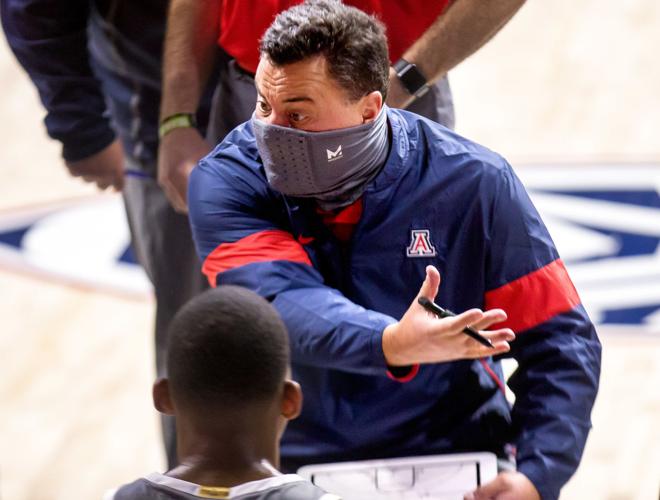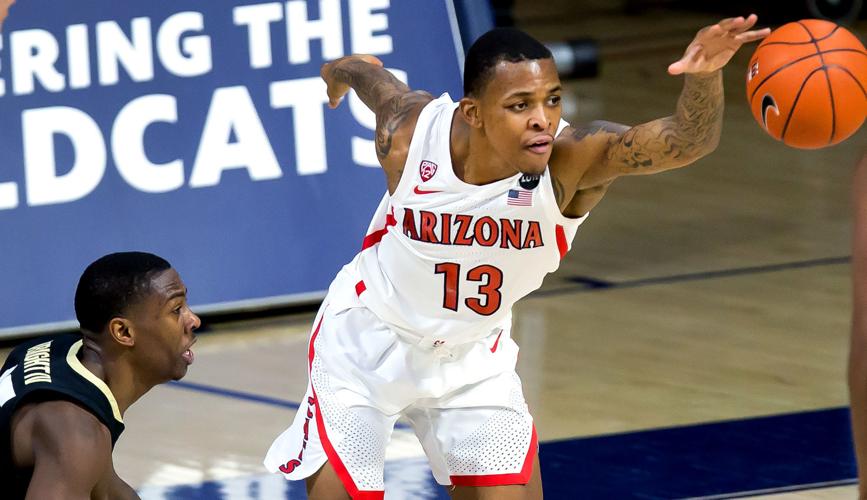After three-plus years of FBI and NCAA investigations resulted in a multiple Level 1 charges being thrown at the Arizona men’s basketball program, one major question remains about the school’s decision to sit out this postseason:
Will that do the trick?
Will Arizona be able to effectively trade sitting out this season for the freedom to compete next season — when it should have a better team — and not have to sit out any additional tournaments?
The school’s decision generated some strong national reaction, both criticizing the process that allows self-imposed bans and for Arizona’s decision to announce the self-imposed ban two months after it received the formal allegations — well after the season started, and a day after the Wildcats emerged as a possible NCAA Tournament team by soundly beating Colorado.
“Arizona’s self-imposed tournament ban is a joke, and the NCAA needs to treat it like one,” A Yahoo Sports headline read.
A CBS Sports column said the NCAA “needs to show that’s not enough” while a Sports Illustrated opinion piece was entitled: “The self-imposed ban strategy is spreading but it’s still not fooling anyone.”
The NCAA’s outside Independent Accountability Resolution Process, which is handling Arizona’s infractions case, can actually add a year or more to Arizona’s self-imposed penalty if it determines the Wildcats indeed have a Level I case. Up to four more years, in fact.
But according to Stu Brown, an Atlanta-based attorney who works with schools on NCAA cases, offering up some sort of penalty can help the school’s case even if a team volunteers to sit out the postseason in a year in which it may not qualify anyway.
“It’s still an important penalty,” Brown said. “Sometimes your conference won’t even let you play in the conference championship (a policy the Pac-12 has) and in basketball that’s important because every team gets invited. Also, it’s pretty symbolic. That’s a pretty strong public recognition that the school has recognized there’s some level of a problem.”
In its statement Tuesday, Arizona said its decision was “an acknowledgment that the NCAA’s investigation revealed that certain former members of the men’s basketball staff displayed serious lapses in judgment and a departure from the university’s expectation of honest and ethical behavior.”
The school also noted that its decision was “in accord with the penalty guidelines of the NCAA for the type of violations involved,” which is essentially an admission that Arizona recognizes it will at least be found guilty of a Level I standard or aggravated case.

After stealing the ball from Colorado Buffaloes guard Eli Parquet (24), Arizona Wildcats guard James Akinjo (13) got after the loose ball during the first half of Arizona Wildcats men’s basketball game against Colorado at McKale Center, 1721 E. Enke Dr., in Tucson, Ariz. on Dec. 28, 2020.
There are also less-penalized Level I “mitigated” cases, but Brown said the UA would likely not have self-imposed a postseason ban if it considered its case in that category, because a mitigated Level I case warrants either no postseason ban or only a one-year ban.
The key to whether Arizona ultimately faces more than a one-year ban may be in whether the IARP decides Arizona has a standard or aggravated Level I case. According to the NCAA’s penalty matrix, standard Level I cases merit a postseason ban between one and two years while aggravated ones mandate between one and five years.
Brown said the UA’s self-imposed ban could be a factor pushing the UA’s case into the standard Level I category, since cooperation and quick recognition of penalties are mitigating factors.
But if multiple Level I charges are proven, that could push the case into the aggravated zone. Arizona has refused to release the NCAA’s Notice of Allegations, but The Athletic reported that UA was handed five Level I charges, and nine overall.
“One of the aggravating factors is having multiple Level I or Level II allegations,” Brown said. “So in that sense, the more you have, the more likely you are to be an aggravated case as opposed to a mitigated case. But Arizona may have a number of mitigating factors — a history of reporting compliance, helpfulness in doing an investigation, whatever.
“My guess is that the school has done an analysis of what the likely aggravating and mitigating factors are, and where that likely puts them within the three sub-parts of a Level I case.
“(Then UA could decide) ‘If it’s Level I standard, the presumed postseason is one or two years, so we do a one-year ban. We’ve taken care of it.’ That’s my suspicion of what type of analysis Arizona has done.”
According to the NCAA’s legislative services database, other schools who have self-imposed penalties for Level I cases that primarily involved men’s basketball have all seen the NCAA add penalties.
But often those penalties are additional recruiting restrictions, fines, vacated games, show-cause orders and probations — but not extra postseason bans for those who self-imposed one. Missouri and Oklahoma State, however, have had one-year bans added after self-imposing only lesser penalties.
“No matter what a school imposes, they’re gonna get an additional penalty of probation,” Brown said, since only the NCAA and IARP can levy probations.
“The goal of the school is ‘Let’s impose something that we think is legitimate within the guidelines of where we think the case will end. But let’s not impose something for the maximum of those guidelines. Let’s impose something toward the lower or middle part, knowing that very likely that whatever we impose the committee is going to come back and add something to it.’ ”






